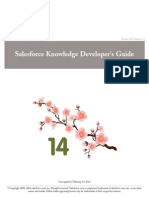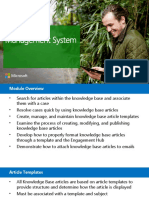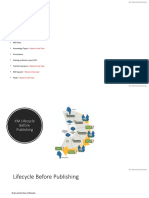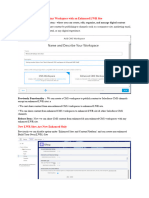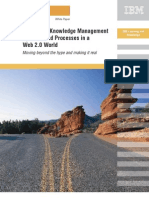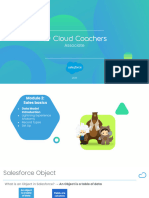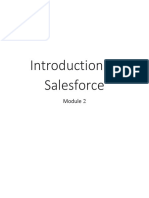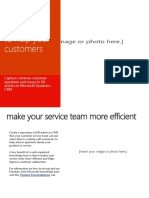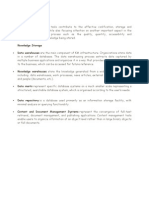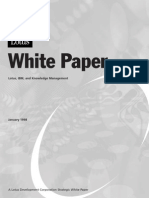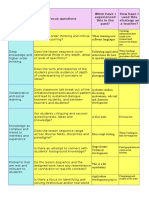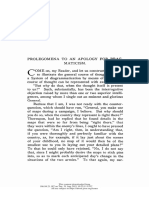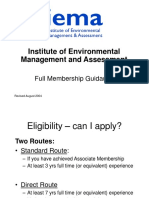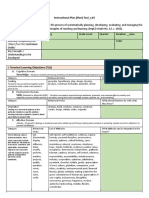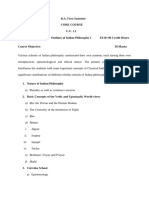0% found this document useful (0 votes)
13 views58 pagesAdmin 603
The document outlines the major capabilities of Salesforce Knowledge, which allows the creation and management of a knowledge base for articles accessible by both internal users and external customers. Key features include article lifecycle management, data categorization for organization and access control, and the ability to publish articles across various channels. Additionally, it discusses the transition from Classic to Lightning Knowledge, article creation and management processes, and the importance of knowledge settings and permissions.
Uploaded by
ahmedsidatendir97Copyright
© © All Rights Reserved
We take content rights seriously. If you suspect this is your content, claim it here.
Available Formats
Download as PDF, TXT or read online on Scribd
0% found this document useful (0 votes)
13 views58 pagesAdmin 603
The document outlines the major capabilities of Salesforce Knowledge, which allows the creation and management of a knowledge base for articles accessible by both internal users and external customers. Key features include article lifecycle management, data categorization for organization and access control, and the ability to publish articles across various channels. Additionally, it discusses the transition from Classic to Lightning Knowledge, article creation and management processes, and the importance of knowledge settings and permissions.
Uploaded by
ahmedsidatendir97Copyright
© © All Rights Reserved
We take content rights seriously. If you suspect this is your content, claim it here.
Available Formats
Download as PDF, TXT or read online on Scribd
/ 58




